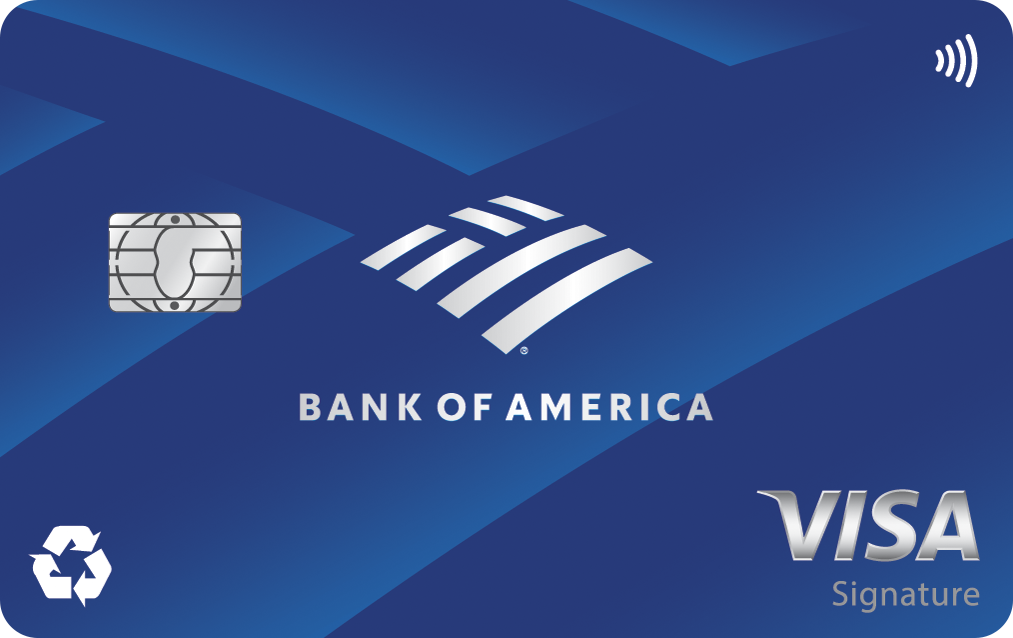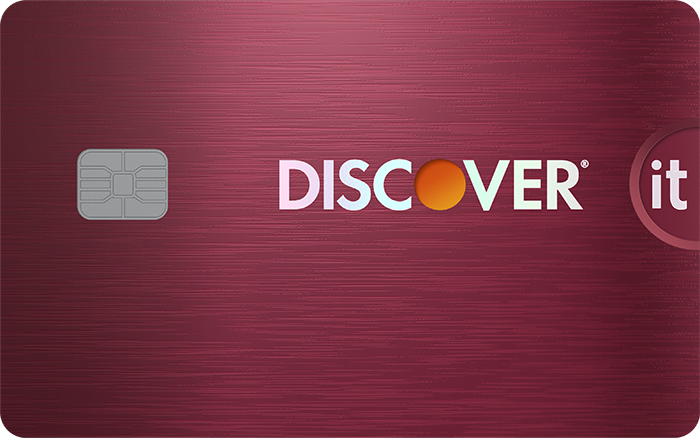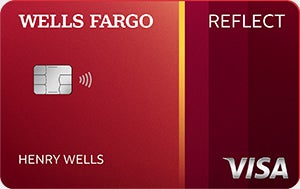The credit card world is full of discussions about what card is best for whom. One common debate is that of store credit card vs. traditional credit card, and which is better for retail purchases.
As with most things in personal finance, this particular debate doesn't have the same winner for every cardholder. Store cards do have their downsides, but they can occasionally make sense.
To help you navigate the debate, we've outlined the particulars of each card type. We'll also examine both sides of the store credit card vs. traditional credit card argument.
Traditional credit cards
At its most basic, a traditional credit card is one that operates on one of the four major credit card networks, Mastercard, Visa, American Express, and Discover. These networks operate around the world, and credit cards with these logos will be accepted anywhere the network operates (according to the February 2025 issue of the Nilson Report Discover is accepted at 99% of places that take credit cards nationwide).
Worldwide acceptance is the main point in favor of traditional cards in the store credit card vs. traditional credit card discussion. That’s not to say every retailer accepts every traditional card. Businesses can decide which cards work best for them.
Although the network on which your credit card operates is important -- it dictates where you can use your card -- the network has very little to do with the specifics of your card like fees and rewards. Instead, these things are set by the credit card issuer.
Your credit card will have both the issuer logo and the network logo. So, when you see a name like Chase, Barclays, or Citibank on a Mastercard or Visa, it refers to the financial institution that acts as the issuer.
There are two exceptions to this: American Express and Discover. These companies are both the issuer and network for their credit cards. As such, not only do they determine the fees merchants pay for accepting their cards, but they also set the fees consumers pay for the privilege of carrying them.
Besides where you can use them, traditional cards have a number of pros and cons in the store credit card vs. traditional credit card debate. Here's a few worth noting:
Advantages of traditional credit cards vs. store credit cards:
- Traditional credit cards are accepted nearly everywhere, worldwide.
- Most traditional cards offer purchase protections.
- Many traditional cards offer extended warranties.
- Introductory 0% APR offers for traditional cards won't have deferred interest.
- Points from a rewards credit card can be redeemed in a variety of ways, including as a statement credit.
Disadvantages of traditional credit cards vs. store credit cards:
- Rewards rates for specific retailers may be low with traditional cards.
- Traditional credit cards tend to have higher limits, which may mean more debt if you're not careful.
- Annual fees on traditional rewards cards can get very high, though plenty of no-annual-fee options exist.
As you can see, there's a lot going for a regular credit card, especially when compared to a retail card. But store cards do have their uses. Let's take a look at the other side of the store credit card vs. traditional credit card face-off.
Store credit cards
In essence, a store credit card is a credit card offered by a specific retailer that you can only use with that retailer.
Most retail credit cards are what's known as closed-loop cards, meaning they operate on a closed network. In contrast, traditional credit cards are open-loop cards, which means they operate on widespread card networks like Visa or Mastercard.
The biggest argument against store cards in the store credit card vs. traditional credit card debate is that retail cards are closed-loop, which really limits their usefulness.
Most store cards don't operate on major networks. But they still have bank issuers -- someone has to handle the payments and move the money around. Depending on the specific card, you may make payments and keep tabs on your store card through the issuing bank's website or through the retailer's website.
Just as retail cards are limited in where you can use them, so, too, are their rewards. Instead of cash back or points that can be redeemed for statement credits, the majority of store credit cards will have you redeem your rewards for store discounts.
Here's a better look at the pluses and minuses for retail cards in the store credit card vs. traditional credit card matchup:
Advantages of a store credit card vs. traditional credit card:
- If you've never had credit or are rebuilding your credit, store credit cards are generally easier to qualify for than many -- but not all -- traditional cards. However, a secured card may make more sense as not all store cards report your payments to each credit bureau.
- Store cards tend to have higher rewards for their own retailers than you'd get with a traditional card.
- You're likely to receive special offers throughout the year, available only to store cardholders.
- Some store cards offer free shipping on purchases from the retailer's website.
- Nearly all store credit cards have no annual fee.
Disadvantages of a store credit card vs. traditional credit card:
- You can only use the card at that store or -- occasionally -- with related brands.
- Most store cards come with a low credit limit, even if you have good credit.
- Retail credit cards tend to carry a higher interest rate than traditional cards.
- Store credit card rewards are typically only redeemable for store discounts.
- Financing offers from store cards usually charge deferred interest.
If you're a loyal customer with one retailer and spend a significant amount of money with them every year, the store credit card vs. traditional credit card debate leans in favor of a store card. Just make sure you pay it in full every month to avoid the high interest rate. For more casual shoppers, however, the limitations can far outweigh the benefits; stick to traditional cards.
The right choice for you
Credit is great when properly managed. Whether you opt for a traditional credit card, store credit card, or a mix of both, it’s important to make that credit work for you. The real winner of the store credit card vs. traditional credit card battle shouldn't be a card -- it should be you.
Credit card comparison
We recommend comparing options to ensure the card you're selecting is the best fit for you. To make your search easier, here's a short list of standout credit cards.
| Offer | Our Rating | Welcome Offer | Rewards Program | APR | Learn More |
|---|---|---|---|---|---|
|
5.00/5
Our ratings are based on a 5 star scale.
5 stars equals Best.
4 stars equals Excellent.
3 stars equals Good.
2 stars equals Fair.
1 star equals Poor.
We want your money to work harder for you. Which is why our ratings are biased toward offers that deliver versatility while cutting out-of-pocket costs.
|
Discover will match all the cash back you’ve earned at the end of your first year. INTRO OFFER: Unlimited Cashback Match for all new cardmembers–only from Discover. Discover will automatically match all the cash back you’ve earned at the end of your first year! There’s no minimum spending or maximum rewards. You could turn $150 cash back into $300. | 1% - 5% Cashback Earn 5% cash back on everyday purchases at different places you shop each quarter like grocery stores, restaurants, gas stations, and more, up to the quarterly maximum when you activate. Plus, earn unlimited 1% cash back on all other purchases. |
Intro: Purchases: 0%, 15 months Balance Transfers: 0%, 15 months Regular: 17.74% - 26.74% Variable APR |
||
|
5.00/5
Our ratings are based on a 5 star scale.
5 stars equals Best.
4 stars equals Excellent.
3 stars equals Good.
2 stars equals Fair.
1 star equals Poor.
We want your money to work harder for you. Which is why our ratings are biased toward offers that deliver versatility while cutting out-of-pocket costs.
|
N/A | N/A |
Intro: 0% intro APR for 21 months from account opening on purchases and qualifying balance transfers Purchases: 0% intro APR for 21 months from account opening on purchases Balance Transfers: 0% intro APR for 21 months from account opening on qualifying balance transfers Regular: 17.74%, 24.24%, or 28.49% Variable APR |
||

Apply Now for Bank of America® Travel Rewards credit card
On Bank of America's Secure Website. |
4.70/5
Our ratings are based on a 5 star scale.
5 stars equals Best.
4 stars equals Excellent.
3 stars equals Good.
2 stars equals Fair.
1 star equals Poor.
We want your money to work harder for you. Which is why our ratings are biased toward offers that deliver versatility while cutting out-of-pocket costs.
|
25,000 points (worth $250) 25,000 online bonus points after you make at least $1,000 in purchases in the first 90 days of account opening - that can be a $250 statement credit toward travel purchases | 1.5-3 points per dollar Earn unlimited 1.5 points per $1 spent on all purchases, with no annual fee and no foreign transaction fees, and your points don't expire as long as your account remains open. Earn 3 points per $1 spent on travel purchases booked through the Bank of America Travel Center. |
Intro: 0% Intro APR for 15 billing cycles for purchases, and for any balance transfers made in the first 60 days. After the Intro APR offer ends, a Variable APR that’s currently 17.74% - 27.74% will apply. A 3% Intro balance transfer fee will apply for the first 60 days your account is open. After the Intro balance transfer fee offer ends, the fee for future balance transfers is 4%. Balance transfers may not be used to pay any account provided by Bank of America. Purchases: 0% Intro APR for 15 billing cycles for purchases Balance Transfers: 0% Intro APR for 15 billing cycles for any balance transfers made in the first 60 days Regular: 17.74% - 27.74% (Variable) |
Apply Now for Bank of America® Travel Rewards credit card
On Bank of America's Secure Website. |
The Motley Fool owns shares of and recommends Visa.

